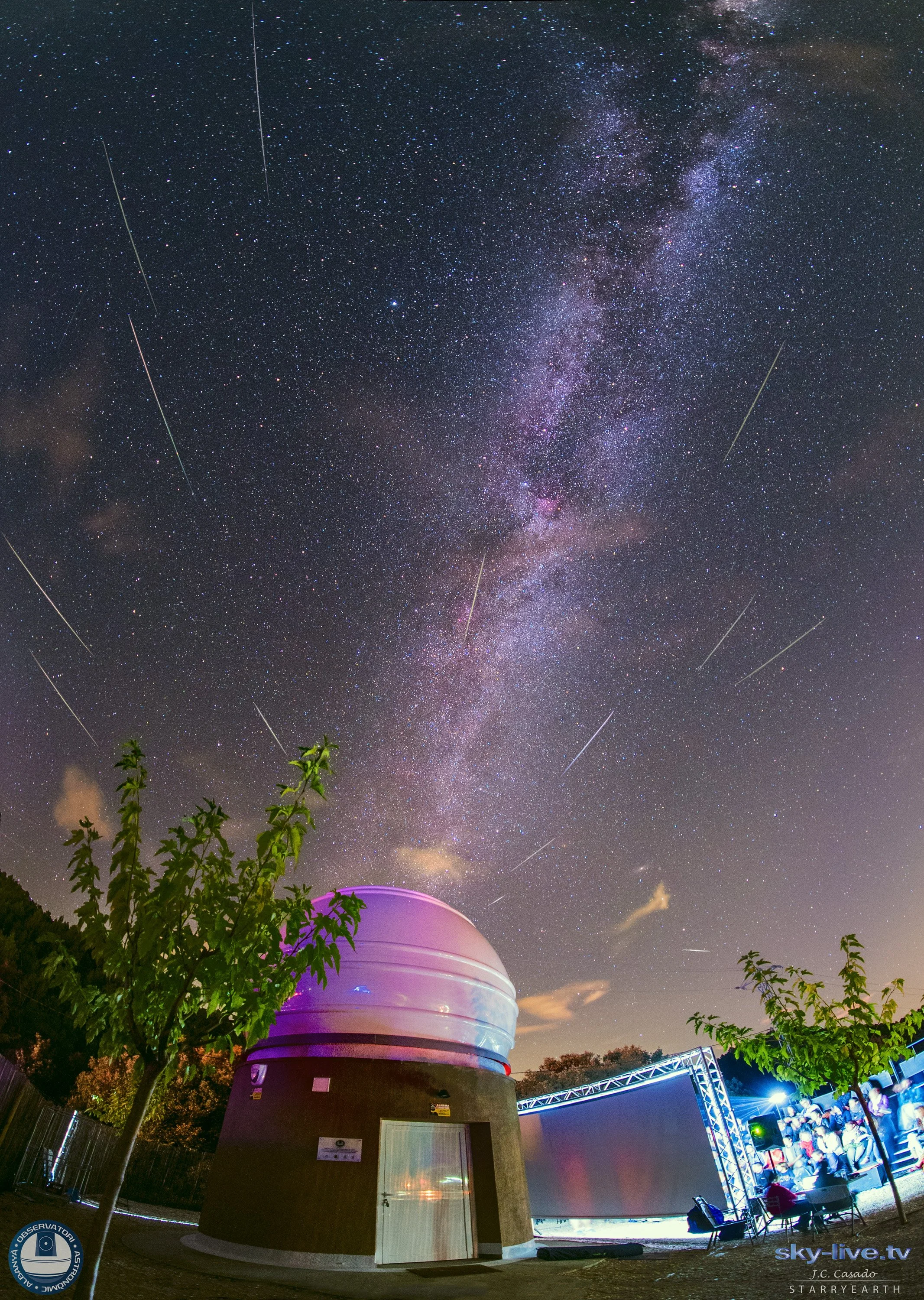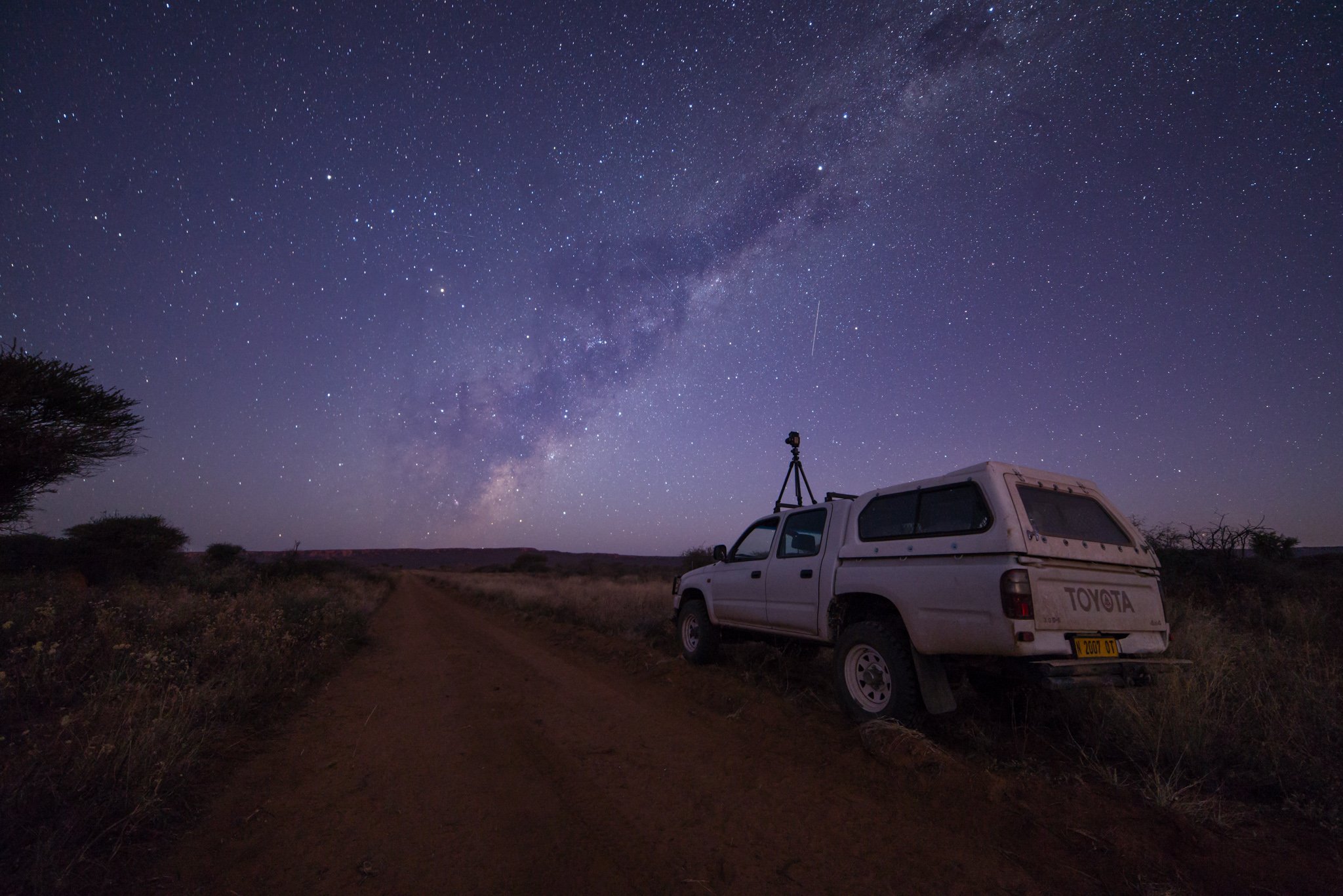Get excited for International Dark Sky Week by exploring a few of the best stargazing destinations the world has to offer.
The Milky Way in Australia. Trevor Dobson. CC BY-NC-ND 2.0
With light pollution making the cosmos fade from our skies, the time to appreciate the stars is now. Around the world, communities have made efforts to maintain dark sky havens where locals and visitors alike can admire bright and vibrant night skies with ease. From Brazil to Japan, here are your next star-studded destinations.
1. Albanya, Spain
The Albanya Observatory. StarryEarth, cropped by Madison Paulus. CC BY-NC 2.0
Albanya is a Spanish municipality near the French border home to miles of mountains and forests and many incredible stargazing spots. Since earning its dark sky park designation in 2017, Albanya has been a magnet for astro-tourists from around the world. Astronomy enthusiasts can explore several popular locations for self-guided stargazing from El Pla de la Bateria to El Casalot.
For those seeking to be guided through the mystical skies, Albanya hosts several stargazing tours and guided events. At the Albanya Astronomical Observatory, astronomers Pere Guerra and Pau Bosch offer carefully curated audiovisual tours where stargazers can admire the cosmos regardless of the weather or time of year.
To connect further with the skies, travelers can camp beneath the stars at Bassegoda Park. Despite being a dream destination for stargazers, Bassegoda Park has activities for everyone from mini golf and swimming to themed weekends.
2. Aoraki Mackenzie International Dark Sky Reserve, New Zealand
Stargazers gather at Lake Tekapo, New Zealand. Dark Sky Project. CC-BY-NC-ND 2.0
Sitting atop New Zealand’s South Island, the Aoraki Mackenzie International Dark Sky Reserve has been a trailblazer in the world of dark sky conservation. Here, outdoor lighting controls limiting light pollution have been in place since the 1980s to support wildlife while conserving energy.
The Aoraki Mackenzie International Dark Sky Reserve was not recognized as a dark sky reserve until 2012, but the night sky has been respected by New Zealand’s Indigenous People for generations. The Māori have long intertwined their culture with astronomy, using the star-studded sky as both a tool for navigation and as a source of inspiration for folklore.
With the Milky Way and planets often visible from the Aoraki Mackenzie International Dark Sky Reserve, visitors can be blown away by what New Zealand’s skies have to offer.
3. Arkaroola Wilderness Sanctuary, Australia
A time-lapse of the night sky in Australia. Steven Penton. CC BY 2.0
The Arkaroola Wilderness Sanctuary boasts over 50 years of award-winning conservation efforts, which have come to include dark sky conservation. Now home to three astronomical observatories, the Arkaroola Wilderness Sanctuary is a destination for lovers of all kinds of natural beauty.
The Ridgetop Sleepout offers a unique experience to adventurous explorers. Travelers partaking in this opportunity get to revel in the phenomenal sky against the backdrop of the Australian outback.
For those seeking to expand their appreciation of natural treasures beyond the night sky, geological monuments like waterholes and gorges have formed in Arkaroola over the past two billion years. An impressive diversity of wildlife, including a wide variety of birds, live alongside these ancient marvels, drawing nature lovers and bird watchers from around the globe.
4. Bisei Town, Japan
A Nova discovered by Japanese astronomer Yuji Nakamura. Xylophilist. CC BY 2.0
Bisei Town, meaning ‘beautiful stars’, lives up to its name. Here, the frequently clear skies and lack of light pollution combine, creating an ideal stargazing destination.
As a designated dark sky reserve since 2021, those under Bisei Town’s sky can witness astonishing assortments of stars with the naked eye. To further enhance the stargazing experience in Bisei Town, visitors can access telescopes at the Bisei Astronomical Observatory to view planets and other celestial objects.
Efforts to preserve Bisei Town’s dark skies have served to be a good role model for town development. Thanks to a partnership with lighting manufacturer Panasonic, the dark skies have been obtained by replacing every lighting fixture with one approved by DarkSky International. These efforts have dramatically decreased light pollution and have landed Bisei Town a spot on the map of the best stargazing havens.
5. Desengano State Park, Brazil
The Milky Way captured over Brazil. Chaval Brasil. CC BY-NC-ND 2.0
Desengano State Park is the oldest park protected by the state in Rio de Janeiro and the first dark sky park in Latin America. Void of any artificial lighting, Desengano State Park touts a pitch-black night lit with a colorful Milky Way. Because of seasonally non-existent cloud cover, the best time to indulge in Desengano’s starry escape is between May and August.
The clear night skies are far from Desengano State Park’s only attraction. Nature lovers are welcomed with a variety of terrains from forest to grassland and over 1,321 species. Activities offered at Desengano State Park range from horseback riding to hiking along trails dotted with waterfalls. With 24-hour access, visitors have endless opportunities to engage with Desengano’s magic.
6. NamibRand Nature Reserve, Namibia
A camera set up to capture the Milky Way in Namibia. Bobby Bradley. CC BY-NC 2.0
Situated in southern Namibia, the NamibRand Nature Reserve is one of the biggest private nature reserves in Africa. Created to help preserve the southwest Namib desert, the NamibRand Nature Reserve has been successful in preserving Namibia’s dark skies as well, gaining recognition as a Gold Tier International Dark Sky Reserve in 2012.
Open-air units are available to those yearning to wake up directly under the stars. Beyond stargazing, the NamibRand Nature Reserve offers many activities centered around environmental education.
People living and working at the NamibRand Nature Reserve, particularly at the Namib Desert Environmental Education Trust (NaDEET) Centre, make efforts to give back to the environment by living sustainability. At the NamibRand Nature Reserve, visitors can have the opportunity to learn about sustainable living while taking in the wonders above.
Madison Paulus
Madison is a student at George Washington University studying international affairs, journalism, mass communication, and Arabic. Born and raised in Seattle, Washington, Madison grew up in a creative, open-minded environment. With passions for human rights and social justice, Madison uses her writing skills to educate and advocate. In the future, Madison hopes to pursue a career in science communication or travel journalism.








